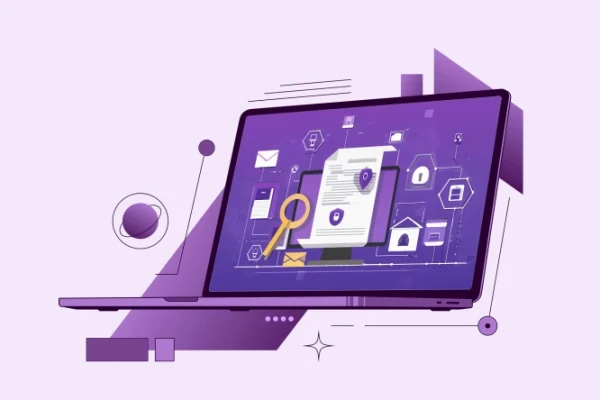The Principles of Zero Trust
Beyond a mere technological solution, Zero Trust represents a holistic approach to cybersecurity that challenges conventional notions of trust within networks. This paradigm shift is not just an option; it is a strategic imperative for organizations grappling with the intricacies of a digitally-dominated world.
The Basics of Zero Trust
At its core, Zero Trust is based on a fundamental principle: “never trust, always check.” It deviates from traditional security models based on a fortress mentality and implicit trust within the network periphery. By recognizing the limitations of these approaches, Zero Trust introduces continuous validation for every digital interaction, recognizing the dynamic nature of cyber threats.
Protecting organisations in the digital landscape
As companies embark on digital transformation, Zero Trust becomes indispensable. This revolutionary cybersecurity paradigm addresses the shortcomings of traditional security models in the fast-moving digital business environment. By eliminating implicit trust, it introduces continuous validation and empowers organizations against sophisticated and persistent threats.
A multi-faceted approach to cybersecurity
Zero Trust takes a multi-faceted approach to strengthening cybersecurity:
- Strong authentication methods: Rigorous authentication and “minimum access rights” ensure that users have only the minimum required access.
- Network segmentation: The fragmentation of the network into smaller segments prevents the rapid spread of attackers across the network and limits potential threats.
- Prevention of lateral movement: techniques are used to prevent threat actors from moving sideways in the network.
- Threat prevention on Layer 7: Advanced threat prevention mechanisms are applied on Layer 7 and address vulnerabilities at the application level.
- Fine-tuning “minimum access rights” policies: Access controls are precisely set and allow users and devices only the minimum level of access required.
- Developing with the digital landscape
- Zero Trust recognizes the dynamic nature of the digital landscape and responds to hybrid workforce growth, increased cloud migration, and the transformation of security operations. In this context, adopting a zero-trust attitude becomes imperative.
Visibility and identification of critical assets: cornerstones of Zero Trust
Within the zero trust framework, visibility and identification of critical assets are essential:
-
Visibility
Definition: Real-time understanding of activities, traffic and entities within the network environment.
Importance in Zero Trust: Enables continuous monitoring, early detection of security incidents and behavioral analysis. -
Identification of Critical Assets
Definition: Identifying and prioritising the most valuable and sensitive assets within an organisation.
Meaning in Zero Trust: Supports risk prioritization, minimum privilege access, and network segmentation.Benefits of Zero Trust: A Comprehensive Security Approach
Implementing the zero-trust approach in your own security architecture offers many benefits for businesses. Some of these are:
- Enhanced Security Position: Zero Trust discards the outdated assumption of trust and improves overall defenses.
- Reduced attack area: With Zero Trust, a company implements the principle of minimum access rights, which makes it difficult for attackers to find ways on the network.
- Adaptability to modern working environments: Modern working environments with teleworking and cloud services are in principle already included.
- Compliance and regulatory alignment: The zero-trust principle adapts seamlessly to regulatory requirements and compliance standards.
- Better security outcomes: Implementing a zero-trust policy removes implicit trust and continuously validates each stage of digital interaction.
- Simplified infrastructure: A shift in IT security offers an opportunity to simplify cyber security infrastructure.
- Lower operating costs: Zero Trust relies on unified security control, resulting in lower deployment and operating costs.
The need to implement a zero-trust architecture
- In the face of evolving cyber threats, the acquisition of Zero Trust is not just a recommendation, but a strategic imperative. It is not just a cybersecurity paradigm; it is a dynamic and adaptive philosophy that adapts to the needs of contemporary organizations. Zero Trust strengthens defenses against the ever-changing threat landscape and provides a resilient and forward-looking strategy for the digital age.
Strengthen your cybersecurity journey: SPIRIT/21 - your trusted partner for the implementation of Zero Trust.
At SPIRIT/21 we recognize the paramount importance of building a robust zero-trust architecture in today’s dynamic cybersecurity landscape. With our extensive network of trusted partners and a wealth of experience, we are ready to assist you on your path to implementing a zero-trust framework. Whether you are considering solutions from our carefully compiled list of partners or need advice on choosing the most appropriate products for your individual needs, our dedicated team is here to help. Contact us and let Spirit/21 be your strategic partner to strengthen your cybersecurity position by implementing modern zero-trust principles. Your security is our top priority, and we are committed to providing tailored solutions that are seamlessly aligned with your business objectives.
Mehr erfahren

This blog post provides insights into the content of a live talk on the topics of Hybrid Work and Zero Trust.

Android 13 will be available for most smartphones in the course of the year. What’s new?

How to use Android Zero Touch to provide employees with originally packaged smartphones that are still managed in the company’s own portal.
Mohammad Rawaqa
Senior Consultant Technical Security
Phone: +491726272708
E-Mail: mrawaqa@spirit21.com
Moe supports our customers in their daily work in the management, design and troubleshooting of network infrastructures and is one of our experts for technical security in the infrastructure sector.

